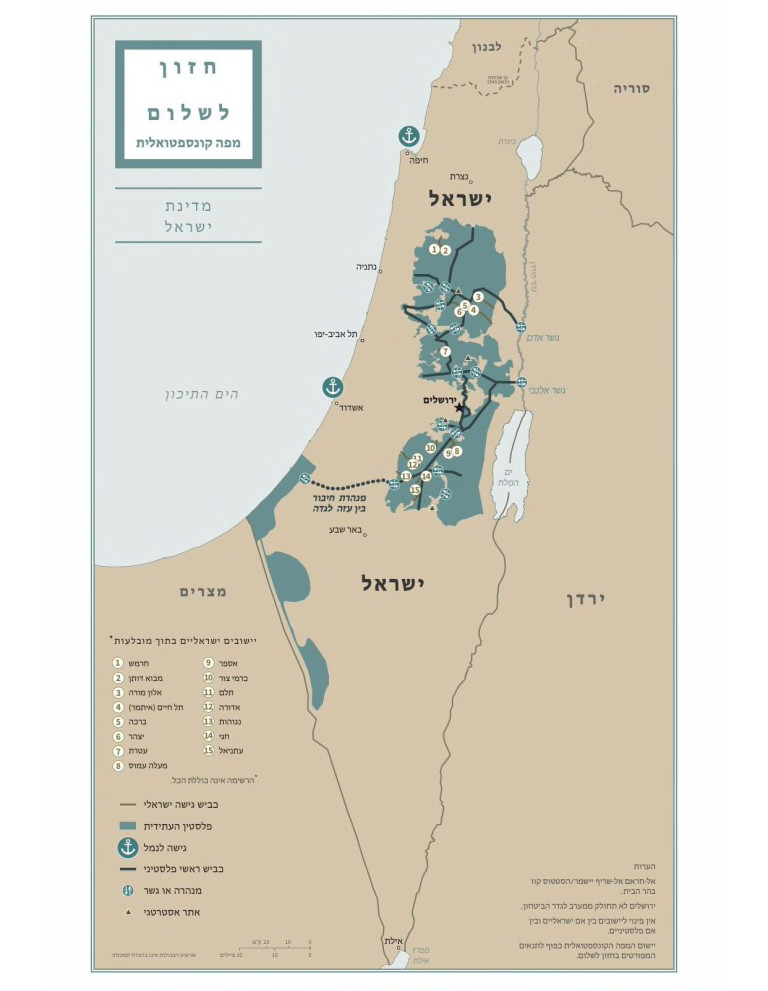“Today they talk about what is and is not urban, but not about equality.”
Haaretz magazine, July 22, 2020
Planners for Equality, a forum led by Arab architects and engineers, joined Planners Against Annexation for a discussion of the damage anticipated from the “Deal of the Century” on both sides of the Green Line
by Esther Zandberg
“The public tends to believe that the annexation issue (in Trump’s “Deal of the Century”) is off the agenda now, since Netanyahu’s declared start date has passed. That idea is dangerously mistaken,” write members of “Finger on the Pulse” – a Forum of Arab and Jewish Planners for Equality in their addendum to a petition by the group Planners Against Annexation calling on planners, architects and geographers to oppose such a move. The need for a direct appeal to the professional community emerged at a conference convened by the Forum on June 1, 2020 during which participants examined the foreseeable spatial impact of annexation on both sides of the Green Line. The School for Peace at Neve Shalom / Wahat al-Salam and the Arab Center for Alternative Planning are partners in the Forum.
The Coronavirus crisis has not stopped discussion of an irreversible process whose impact would extend far longer than the pandemic. The conference was organized and led by architect Dr. Enaya Banna and Prof. Oren Yiftachel, a geographer. Participants included, among others, jurist Michael Sfard, engineer and former Knesset member Hanna Swaid, urban planner Hiba Bawardi, and researcher Shaul Arieli who studies the Israeli-Palestinian conflict.
Speakers at the conference emphasized, not for the first time, the indissoluble connection between planning and politics, and called for “spatial professionals” to speak out publicly against a step that is as catastrophic politically as it is contrary to their professional ethics. The extension of Israeli law to broad areas of the West Bank as per Trump’s Deal of the Century would mean, “in immediate terms, sweeping expropriation and nationalization of Palestinian-owned property,” according to Sfard, who explained that “if a family in Ramallah or Jenin owns land in the areas to be annexed by Israel, technically their land will become absentee property.” The people living in the annexed areas will become illegal aliens on their own land and exposed to an ongoing risk of expulsion. Historically, the absentee property law in Israel is used by the State to take control of Palestinian property.
Case in point: Baqa al Gharbiyya
The proposed transfer of villages in the Triangle district to a Palestinian state would leave “areas attractive from an economic standpoint within Israel,” says Hiba Bawardi. As an example, she pointed to the new Baqa al Gharbiyya industrial area, which was built to provide employment for the city’s residents but which, under the annexation map, would remain entirely within Israel, leaving Baqa even farther behind economically. And that is just one example.
The annexation itself is not an explicit act of planning, according to architect Yotam Ben Yaakov, a Forum member. Still, he says, “It cannot be that the professional community will say nothing when an area divided by employment does not allow for planning worthy of the name, when communities will be cut off from one another with no possibility of suitable transportation, and when Palestinian residents will have no access to almost fifty percent of their land. The plan, incidentally, would also harm several of the settlements.” A map of the whole state of Israel “is living proof of the extent to which planning can create injustice,” says Yiftachel, “and our professions need some shaking up.”

The petition has already been signed by more than 400 Arab and Jewish Israeli professionals and by dozens of university professors worldwide. This is certainly an impressive number for people in this field, whose members customarily do not take public positions on issues within their area of responsibility and most particularly not when an issue involves space and politics. Many would deny any connection between the two.
Conspicuous among the signatories by their absence are senior figures in the national planning establishment, leading architects in the housing market, and the major professional organizations – which also refrain from taking positions publicly on civil questions like the housing crisis or the uptick in accidents at building sites. On the other hand, the signatories do include more than a few young professionals whose presence signals hope that they may yet change this picture.
One crucial change, says Enaya Banna, is about equal participation for professionals from the Arab community in the various planning institutions and committees. As of now, she notes, among the 36 members of the National Council for Planning and Building, there are only two Arab representatives, and in the National Infrastructure Committee (known by its Hebrew acronym, Vatal), not a single one. “The sense is that in the professional organizations they don’t want to talk about the shadowy side of planning or about discrimination through planning. Today it is fashionable to talk about what is and is not urban, but not about equality.”
The silence of the “spatial professionals” also damages the standing of the professional planning community itself: The wider public is unfamiliar with it and does not see it as a player with relevance or clout. The people responsible for shaping our space have almost no involvement in the nation’s public conversation, political or civil. The planning professions touch on all areas of life, far beyond the merely technical dimension of the ruler and the bulldozer. Yet unlike other public intellectuals, professional planners avoid speaking out or taking a stand on any issue on the public agenda, from cultural questions to the Coronavirus. “Within this silence we have an opportunity to be heard. Otherwise, we will remain outside the equation. We must do something,” says Yiftachel. The way is open for planners to do something more than sign a petition. The streets and the public squares are waiting.
